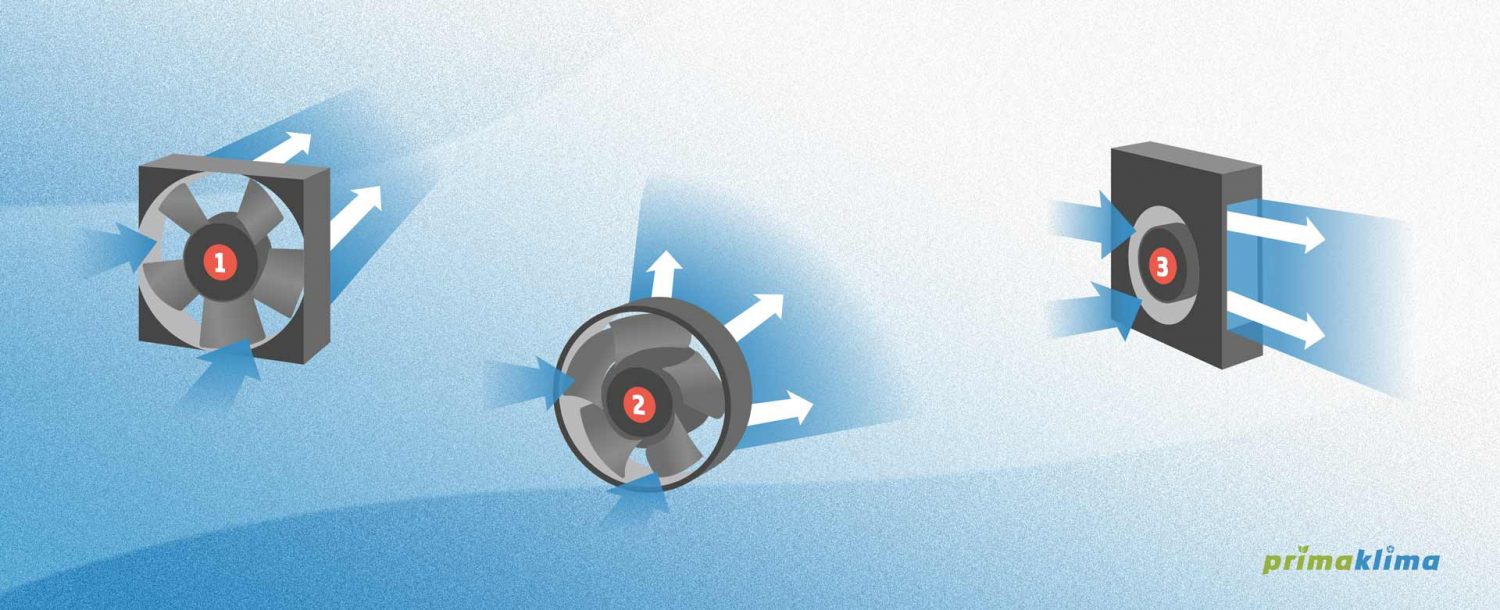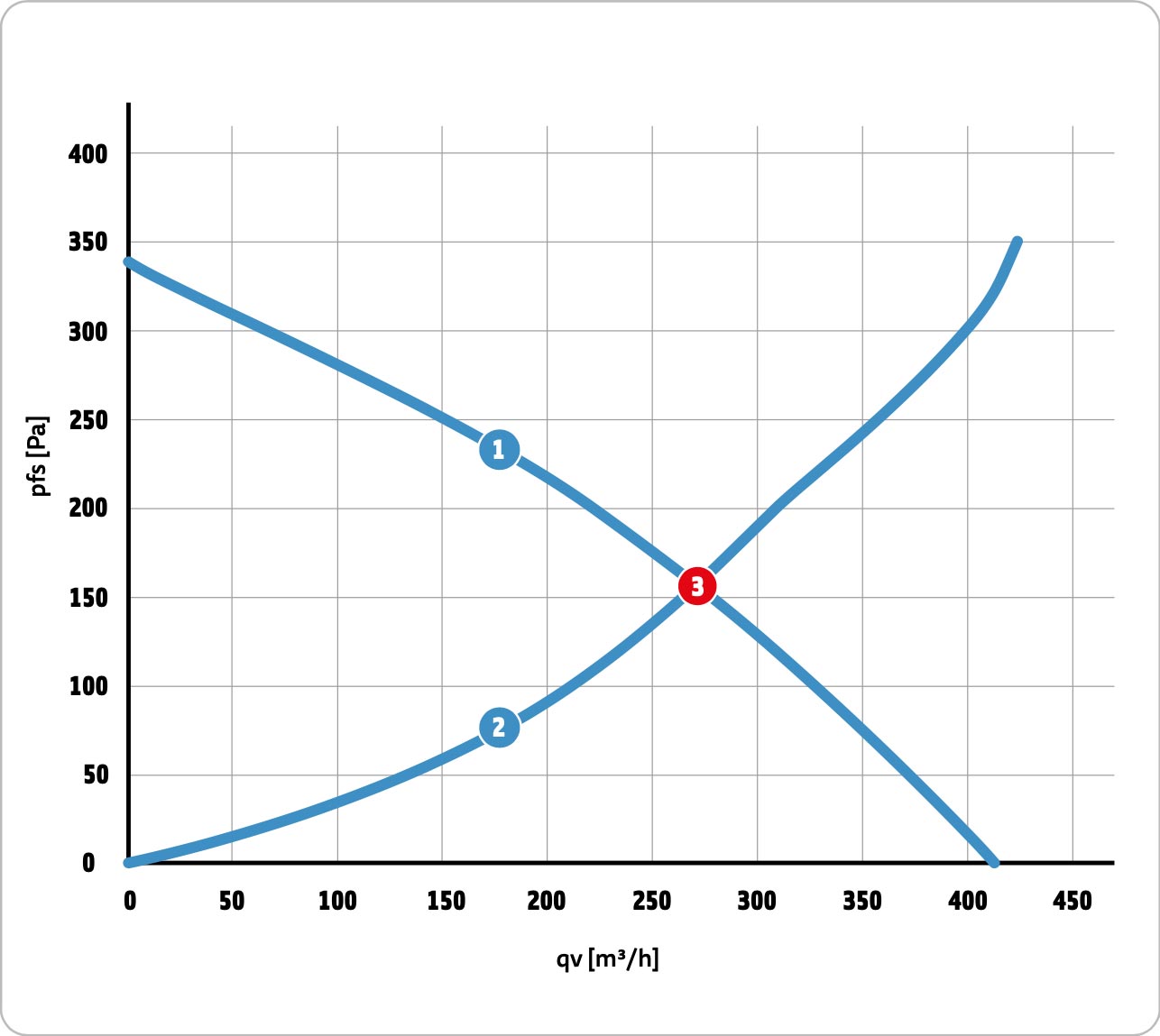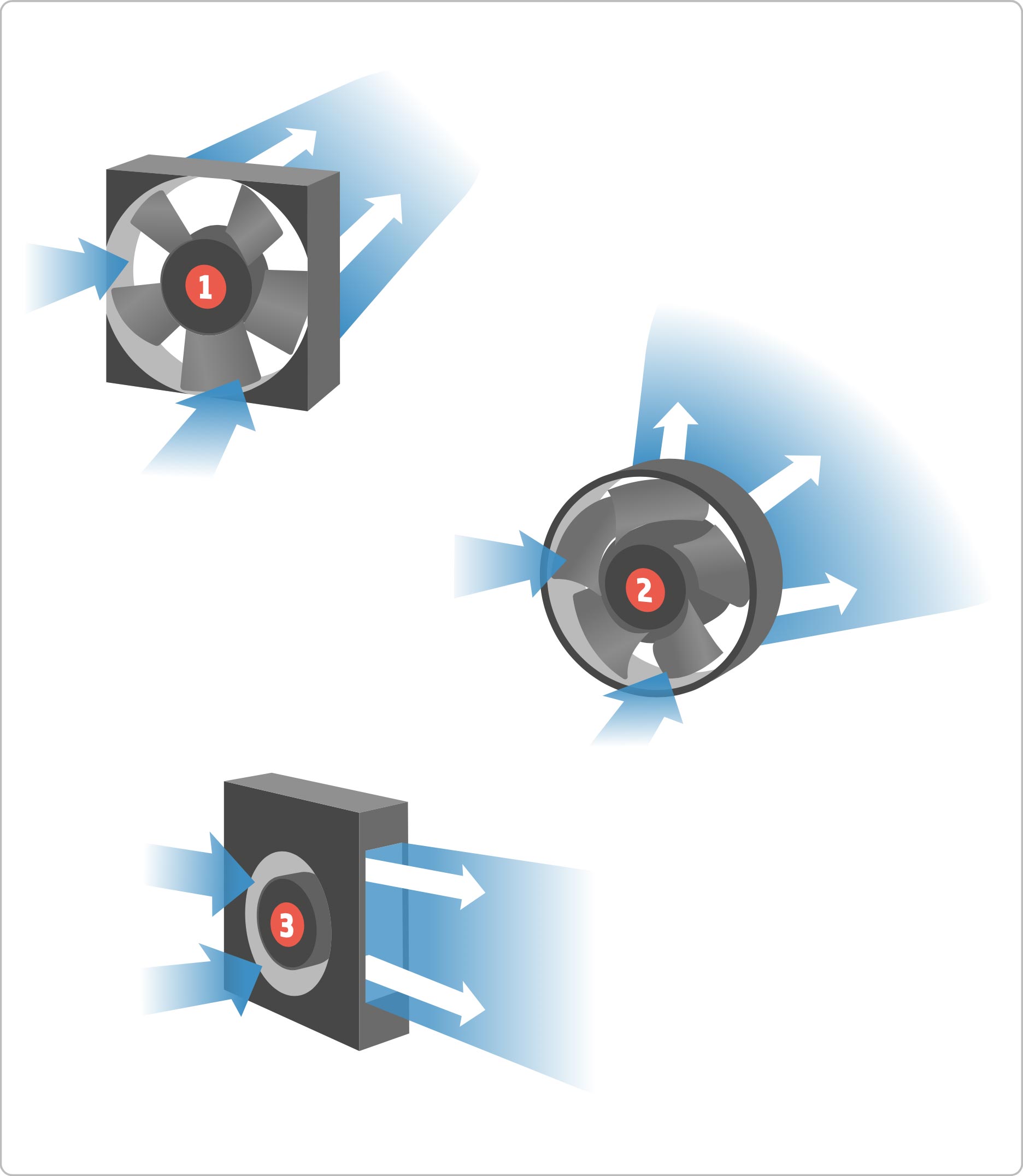Ventilation
Ventilators: Construction and Functionality
Basically, we distinguish between three types of fans: Axial fans, diagonal fans and radial fans. Depending on the application, a corresponding fan type is used. The decision as to which type can be used depends on the required air flow rate and the pressure that the fan must generate. Only with perfect matching can the required air volume be provided efficiently. If, for example, an activated carbon filter is connected to a fan, the fan must provide a corresponding suction power.
During operation, other factors also influence the performance of the system. The filters that are used become increasingly dirty, which increases the resistance for the fan. The exhaust air conduction usually contain arches, hoses or silencers, so that the fan not only has to build up suction pressure on the air intake but also pressure on the exhaust air side. These resistances change greatly depending on the amount of air transported.
According to the type of fan, characteristic curves are given from which the pressure drop can be read depending on the air flow rate. Caution, the pressure drop of activated carbon filters increases over time.
Axial fans
They consist of a propeller that conveys the air horizontally to the back. The suction and pressing power is relatively low. This type of fan is used for pedestal fans, recirculation fans and supply air fans without a pipe connection in the pressure range up to 80 Pa. Advantage of this design: The air flow rate is very high as long as no suction or pressure power is required.
Diagonal fans
They are a further development of the axial fans
and are very efficient. The air blades are conical
and aerodynamically shaped towards the back so that the air is ejected diagonally at about 45° to the suction direction. The suction pressure is much better than with axial fans. They are used in the low to lower medium pressure range up to 250 Pa. The efficiency is very good, but these fans run at high speeds of about 4000-5000 rpm, which makes them noisy in operation. A major disadvantage of this type of fan is that in the event of counter-pressure on the exhaust air side, they rapidly lose throughput.
Radial fans
They are used in the medium to high pressure range up to 1000 Pa. The air is drawn in horizontally and ejected vertically, slightly curved backwards, via a turbine-like blade wheel. Radial fans achieve the highest performance and, when properly designed, offer the most efficient solution for large air volu- mes and filter performance. In combination with the CNC-balanced ebm-papst motor impellers with the “radial” blade shape that we use exclusively,
our Radial fans achieve a unique efficiency and smoothness of operation with optimal suction and dynamic pressure at the same time. The patented ebm-papst motors are designed for continuous ope- ration, running times of up to 15 years are achieved. Despite the high air performance, the fans generally only have to run at 2400 rpm, which additional-
ly minimises running noise. This results in ideal conditions for the use in our filter solutions – decent pressure and suction power with high air throug- hput. Quiet, durable and economical – a truly sus- tainable system component. For us, without a doubt, the kind of fan we need to satisfy our customers.
Tip
You can partially remove coarse dust from the activated carbon filter by changing or washing the pre-filter fleece and vacuuming the perforated plate with a hoover. This can reduce the pressure drop of the filter, the air flow rate increases, the fan is relieved and consumes less energy.
At primaklima, we use diagonal fans for the supply air, as these are usually installed to blow freely and thus hardly have to build up suction and pressing power. For the exhaust air with an activated carbon filter connected to the suction side, only centrifugal fans are an option for us. They run much quieter and provide strong suction and pressing power.
The difference between AC and EC motors.
AC motors are conventional electric motors in which permanent magnets interact with alternating electromagnetic fields on the armature of the drive shaft to generate a rotary motion from electrical energy. Frequency and level of the voltage determine the speed. This means with higher voltage and frequency, these motors rotate faster. AC motors can be speed-controlled via the voltage or the frequency, which in practice is done via variable transformers for cost reasons. The cheapest way to control AC motors is via phase-angle control. This type of control is simply known as a dimmer. This results in a high power loss, which manifests itself in humming and heat generation at the motor and the controller. The energy is burned on the way to the motor so that it turns more slowly. In addition, the permanent magnets used here as fixed components in the motor housing “pull” or “push” the armature of the motor, according to the electrically generated magnetic field at the armature, in order to make the armature and therefore the drive shaft rotate. However, these permanent magnets also “brake” the armature if it has to pass through areas without a suitable magnetic field during the rotary motion.
Technically speaking, GreenTech EC technology (made by ebm-papst) can be described as “soft commutation”. This is a combination of commuta- tion strategy and motor design. The result is a low-noise operation without any structure-borne noise. This means that permanent magnet motors are used in different designs to achieve the best performance for the particular application and the desired power range. Synchronisation tolerances are compensated by intelligent electronics. GreenTech EC motors and fans can be operated in both direct current and alternating current power grids (1 and 3 phases). Due to the complete integration of the electronics into the motor, many of the EC fans already have exactly the same dimensions as their AC counterparts. The switch from AC to EC pays off in regard to the enormous efficiency advantages and is really easy thanks to plug-and-play.

 Deutsch
Deutsch


